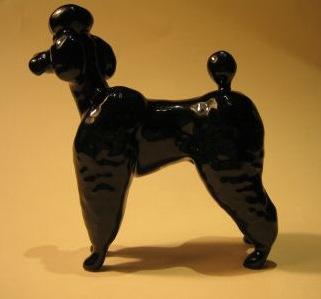
Now blue-green meat, THAT'S bad for you!"--Tommy Smothers
Today's class was all about fabrication of meat. We worked on pieces and parts of lamb, a pork loin, and a beef loin. The lamb, she was not so good...I think her cryovacing failed, because when we opened the package, class quickly became CSI Lab in instead of a butcher shop. Stink-a-rama! Of course, since we never waste anything, we went ahead and worked on the fabrication for the practice and then threw the racks away. It was very, very, very hard to breathe a couple of times...which might be a benefit to the ol' diet plan.
So, we took a whole loin of pork and removed the rib bones and separated the tenderloin from the loin. We removed the meat from the ribs to use for sausage or other forcemeat. It was definitely the easiest fabrication I had done--much easier than the chicken or fish days. There's something sort of zen like about dressing a piece of meat--removing the silverskin and excess fat and bones. Which might be kinda scary, too...every instance in every mob movie about "getting rid" of the "evidence" comes to mind...okay, won't go there! No telling what kind of searches will hit on that blog entry!
Chef talked with us about the pros and cons of fabricating your own meat. If you have the room and the staff, then it would behoove (hee!) to get the larger pieces (primals or subprimals) and cut what you need. You get the added benefit of being able to use some of the bits and pieces for fortifying stocks or use some of the smaller cuts in stir frys, etc.
A short (tiny) course on meat and beef in particular:
All meat has to be inspected by the government, both before and after slaughtering. Meat should have a government inspection stamp somewhere either on the carcass or on the packaging. The grading (prime, choice, etc.) is voluntary, but pretty much all ranchers and farmers have their products graded. The grade given to a particular carcass follows all the cuts/products that are fabricated from it. Grading is also used as a marketing tool.
The top 3 grades for beef are Prime, Choice, and Select.
Prime grade beef is made from young, well-fed cattle. It has a high degree of marbling and is both tender and flavorful when cooked. Prime grade makes up a very small (about 2%) amount of all beef and is generally sold to fine restaurants or in specialty markets. Chef made sure to mention that if your menu mentions that you are serving a "Prime New York Strip," then you should be serving a piece of meat that has been graded as "prime." He mentioned something about "truth in menu," which I took to mean the same as truth in advertising...as in you are getting a "prime" piece of meat for $11.99, somebody's not telling the truth!
Choice grade is a very good quality beef but as a little less marbling and will turn out less tender if overcooked. If using a loin or rib cut, this will be a great piece of beef. Choice is generally available in many stores but you might have to ask for it or get it from the counter.
Select grade beef has less marbling and may be tough and dry if not correctly prepared. With a Select cut, you should consider a marinade to tenderize and make the meat more flavorful. Select is commonly available in most cuts.
Chef cleaned up a New York strip and cut some steaks from it. He told us about what to look for in a good steak. At one end of the loin roast (where the strip comes from), there is a vein, which to the uneducated eye might look like marbleing. It's inedible and tough, so if you've ever gotten what you thought should have been a nice tender steak but it had this tough piece running through it, it's because the butcher didn't discard that piece or fabricated it into something else, like tips or stir fry meat. It's hard to explain exactly what it looks like, but on the pieces he cut today, it sort of appeared as a "Y" formation down the middle of the steak.
It was my turn as sous chef today, so I got to direct everyone in the set up and fabricating tasks...the power! The power!! Bwahaaaahhhaaa! Mr. Big Stuff was the sanitation steward today, and he was supposed to direct the clean up...and Chef told him to do pots and pans...or mostly icky bloody sheet pans and cutting boards, and then assigned the rest of us to other tasks. Big Stuff was mumbling under his breath and slinging stuff around, saying, "I just want to get out of here on time." Snort. It looks like the balance of power (or at least cleanup) is shifting and becoming more balanced.
Before class started today, we had a "family" meeting. The culinary programs are big on the whole family ideal. Anyway, we get to meet the newbies and introduce ourselves and offer some sage words of wisdom. It was weird when I walked into the class room, and 2 or 3 of the first quarter people are calling my name and saying "there she is!" I've not met these people before today, so I was thrown just a little bit. They explained that Chef showed them a copy of my sanitation project from my first quarter as an example for them to follow. Evidently, they were most impressed with it, which kinda made me feel all warm and tingly. I had ag-on-ized over that project until I thought I was going to pull all my hair out.
We had to create a fictional product and write a safety and sanitation plan for it, covering all the bases from the building set up, employee training, and how the product was manufactured, taking into consideration things like temperature, packaging, cleanliness of equipment, and how to track the product in case of a recall. We got a fleeting glance at an example, and the directions on how to complete the project were less than clear--Chef said she wanted to see "our" interpretations and not a copy of a previous plan. (Ha! "my" interpretation!) So, I created "Aunt Aphrodite’s Amazing Spanakopita Mini Rolls," a frozen appetizer product. I modified a recipe from Rachael Ray, where she made spanakopita "roll ups," which are pretty darn tasty. They stayed crispy longer than traditional in the pan spanakopita (Greek cheese and spinach pie).
I think what tilted them over the edge was the line in my paper that said, "We here at Aunt Aphrodite’s set our standards to Olympian proportions." How could I resist? At least I didn't say "cleanliness is next to godliness," but I was soooo very tempted!

However, the bestest thing about today was the advanced baking class sharing their flans and cheesecakes with us. This quarter is sooo much better than the last two!

2 comments:
I'd love to learn about the different cuts of meat, and getting to eat flan and cheesecake doesn't sound like too much of a hardship.
Reading your blog every day is like a little glimpse into the culinary world - delicious and mouth-watering. Now I want to go to chef school!
Other than the lamb, sounds great and I loved the line -- and really like the cleanliness one you didn't use. :) I am enjoying reading you.
LW
Post a Comment